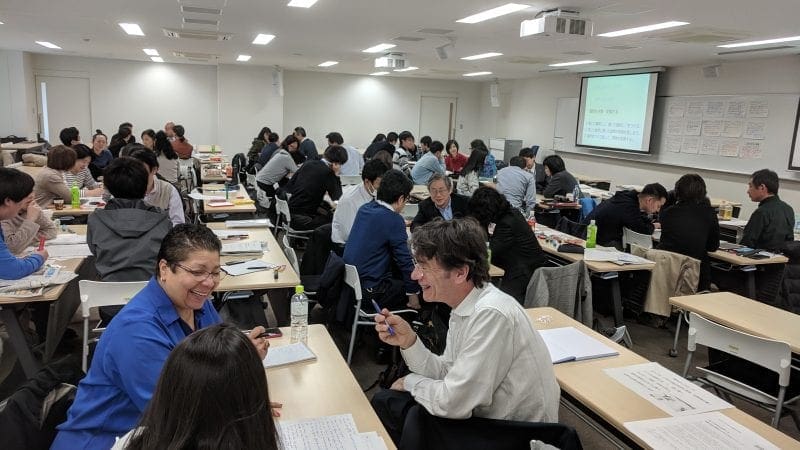During a trip to Japan in spring of 2019, the Right Question Institute’s Luz Santana, Tomoko Ouchi, and Sarah Westbrook met energetic professors, teachers, graduate students, business leaders, and others eager to use the Question Formulation Technique.
The experience highlighted how the Question Formulation Technique (QFT) has widened its appeal in the country since 2017, when Dan Rothstein, co-director at the Right Question Institute (RQI), traveled there.
Ouchi, RQI’s international program specialist, observed how the QFT had grown in popularity since 2017. “I saw a lot more educators actually using it” this time around, she said. “Two years ago I thought the QFT was being used only by special teachers” — innovative early adopters. “This time, I think every teacher can use it.”
“It was amazing to see how the QFT, regardless of the culture, still works,” said Santana, RQI’s other co-director. “And people describe it as they do here, as an elegant process.”
Westbrook, RQI’s director of professional learning, was struck by the enthusiasm for the QFT she encountered from educators throughout the trip.
International Hatenathon Forum
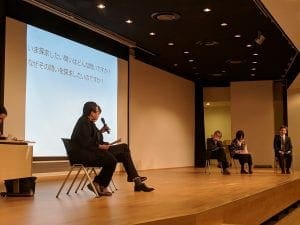
A main component of the trip was the International Hatenathon Forum at Kyoto Sangyo University.
Kenichi Sato, a molecular bioscience professor at the university, developed the concept of “hatenathon,” which combines the Japanese word for “question mark” with “marathon.” A hatenathon is a learning event where students (and others) can formulate and develop their own questions. The QFT is a central component.
Sato came to appreciate the power of question-formulation skills after reading the book, Make Just One Change, which “made me realize that questions are something I need to work on in order to create,” he said.
The International Hatenathon Forum featured a lineup of speakers, including Santana. Santana spoke about the importance of questions and the role of question formulation in learning. She also provided examples of the QFT and how it benefits students and researchers.
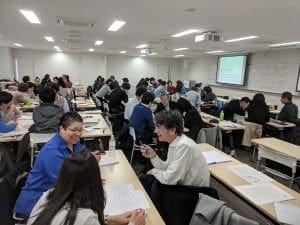
Another speaker was Kazuhiro Nagata, director of the Institute for Protein Dynamics at Kyoto Sangyo University, who is also a poet. He compared the idea of curiosity to a tanka, a type of poem similar to a haiku, and drew connections between science and the arts. “The connection for him is challenging assumptions because of your curiosity,” Westbrook said.
Nagata also spoke about the role of faculty and students at a university, said Ouchi, who is from Japan. “The faculty’s job is to teach what is known, but it’s the students’ job to go beyond that,” she said, summarizing Nagata’s thoughts.
Mina Matsumoto, a journalist, spoke of the importance of asking questions about news coverage, a key part of media literacy. She was struck by the fact students in the United States have used question formulation as an avenue toward advocacy and protest — something relatively foreign to Japanese educational culture.
Harry Stokhof, an education scholar from HAN University of Applied Science in the Netherlands, presented some of his research into the benefits of question formulation for students. “There were really significant outcomes,” Westbrook noted.
On the second day of the conference, Sato conducted an energetic QFT session on the United Nations’ Sustainable Development Goals.
After the forum, a high school student — who attended during spring break — emailed Ouchi to say the event was a rare opportunity to talk with people from abroad. “It was a valuable experience, and I learned a skill which is useful not only in high school but also in life,” the student wrote.
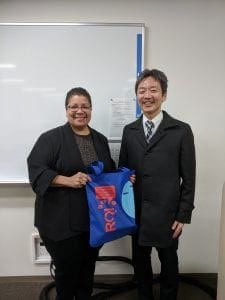
An emphasis on 21st century learning
Interest in the QFT also comes as Japan seeks to better prepare primary and secondary students for the future.
It’s a goal articulated in the education ministry’s Third Basic Plan for the Promotion of Education. The plan focuses on developing “21st century competencies” and promotes “proactive, interactive, and authentic learning,” according to a report from the Organisation for Economic Cooperation and Development (OECD). Lower grades began incorporating the plan in 2018, and it will be fully rolled out to all grades by 2022.
There’s also a push to provide better professional development opportunities for teachers. The OECD notes Japanese teachers work more hours per week than their colleagues in other countries. Around 86 percent of lower-secondary teachers said their heavy workload prevented them from pursuing professional development.
“The challenges teachers face are universal,” Westbrook noted.
Many Japanese educators see the QFT as offering a solution on these two fronts. It promotes things like collaborative learning, critical thinking, curiosity, the development of new ideas, and other “21st century competencies.” As important, the QFT is a quick-to-learn technique that’s accessible to overworked teachers.
Beyond connections to Japan’s new curriculum standards, in Japanese schools “there is this very traditional idea of raising a child. Not educating a child, but raising a child,” Westbrook observed. In other words, the school bears some responsibility for not just the academic, but also the social, emotional, and moral development of every child. “If you can connect what the QFT does to that old idea, it’s a perfect marriage, because the QFT builds communications skills. It builds collaboration skills. It builds character,” Westbrook said.
In Tokyo: Mizumoto Middle School and Tokyo Gakugei University

This is one reason Tetsuya Endo, principal at Mizumoto Middle School in Tokyo, invited RQI to work with faculty. The school serves a disadvantaged population, and students are energetic but struggle with academic achievement, Endo said. He felt the QFT would help make the shift from passive learning to active learning and that it could help expose teachers to a new approach.
“The QFT is effective not only for those students who have motivation and are good at studying,” said one Mizumoto teacher, “but it’s good for those who are left behind, and I can stimulate their learning with the QFT.”
Another said the QFT could be a catalyst to “help students who do not know what they do not know.”
Westbrook was struck with another cross-cultural similarity among teachers, in that they immediately saw how teaching the skill of question formulation could help “reach every child.”
At Tokyo Gakugei University, Sumiko Nakamura, an associate professor of education, organized a QFT training event attended by about 80 educators from all grade levels. Many educators in the training were experienced QFT users. Hiroko Sato and Miki Tsubakiyama presented student work from their literacy classrooms.
“If students learn to ask questions, learning becomes deeper and more fun,” one participant observed. Another pointed to the QFT’s ability to transform learning from passive to active and support learning beyond basic content.
Questions in research and business
The team from RQI also worked with graduate students and business leaders.
At the Geo-Spatial and Space Technology Consortium for Innovative Social Services (GESTISS), in Tokyo, RQI staff introduced a group of graduate students to the QFT for research. Atsushi Koshio, a professor at The Graduate School of Project Design, felt the QFT could help students formulate questions that will be crucial for society and teaching.
All the graduate students at the event agreed the top factor contributing to quality research was “asking the best research question,” and after learning the QFT they felt the technique contributed to their ability to do that.
At the Mindful Leadership Institute, around 50 leaders from the business community attended a QFT training session. The group included physicians, consultants, executives, and others.
They worked to create question prompts and questions around issues such as developing new products, fostering better communication and collaboration in the workplace, and improving work-life balance.
One participant noted, “The skill of asking questions is becoming more and more critical as one of the key literacies in this era for anyone, including business people or educators.”
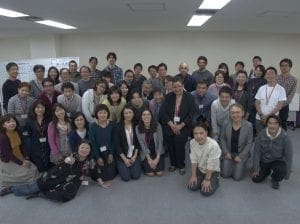
Online learning in Japanese
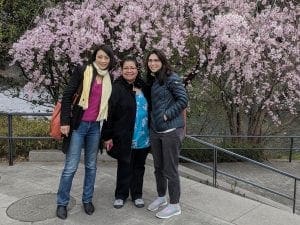
Throughout Japan, “people were so nice and receptive and welcoming,” Westbrook said. “It was such a privilege to work with each group.”
“Going to Japan. Working with a different culture. Seeing how excited they are about questioning was all tremendously valuable”, said Santana.
In June, Ouchi is hosting an hour-long online workshop in Japanese. Participants will learn the fundamentals of the Question Formulation Technique and how it can be applied in classrooms and elsewhere to drive curiosity, learning, and innovation. It takes place June 14 at 9 a.m. EDT, which is 10 p.m. Japanese Standard Time.
By Chris Orchard: chris.orchard@rightquestion.org
